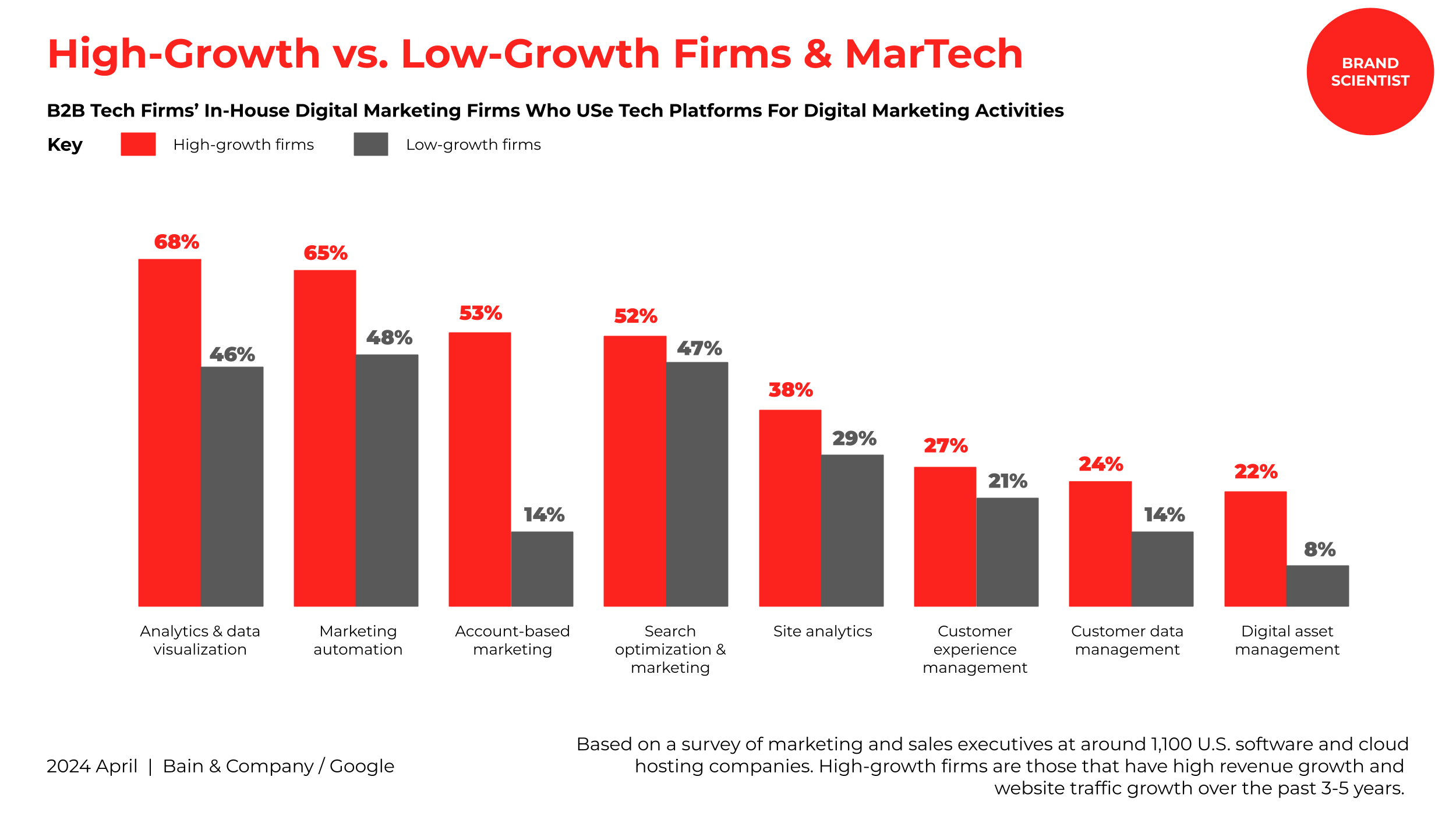High-Growth Firms Prioritize MarTech For Measurement And Attribution Methods
High-growth B2B software and cloud hosting companies differentiate themselves from low-growth firms through greater investment in digital marketing experimentation, AI adoption, and advanced measurement techniques. According to research from Bain & Company and Google, high-growth companies allocate 50% more budget and 80% more staff hours to digital marketing experimentation than their lower-growth counterparts. This emphasis on testing and innovation allows them to extract more value from AI and other emerging technologies.
A key factor in their success is their ability to leverage AI for marketing and advertising. Companies with mature experimentation practices are significantly ahead in AI adoption, with 64% using generative AI for content creation and 54% using it for ad creative, compared to much lower adoption rates among firms with less experimentation maturity. These firms also outperform in traditional AI applications, such as paid media optimization and marketing strategy, leading to 30% higher productivity gains and improved customer conversion rates.
High-growth firms also invest heavily in in-house expertise, particularly in account-based marketing (ABM), data science, and analytics. They are 2.5 to 4 times more likely to have in-house ABM capabilities and nearly twice as likely to have strong data analytics teams. Their tech stacks reflect these priorities, as they are five times more likely to implement tools for analytics, marketing automation, and ABM, giving them a competitive advantage in targeting and engagement.
Finally, measurement and attribution are major priorities for high-growth companies. They are 2-3 times more likely to track key signals like account engagement and intent-based third-party data. Their confidence in marketing measurement techniques, such as multi-touch attribution and propensity modeling, is roughly 30% higher than that of low-growth firms. These advanced measurement capabilities enable them to refine strategies and optimize marketing ROI effectively.
Key Actionable Takeaways:
Invest in Digital Experimentation – Allocate more budget and staff time to testing new marketing strategies and channels to drive innovation.
Adopt AI for Content and Ad Creation – Use generative AI to enhance content production and optimize ad creatives for better engagement.
Leverage AI in Paid Media and Reporting – Implement AI-driven tools to improve campaign performance, optimize ad spend, and enhance data analysis.
Build In-House Account-Based Marketing (ABM) Capabilities – Develop internal teams to execute one-to-one and one-to-many ABM strategies effectively.
Strengthen Data Science and Analytics Teams – Prioritize hiring and training for in-house data expertise to improve marketing insights and decision-making.
Upgrade Marketing Tech Stacks – Implement analytics, automation, and ABM technologies to improve efficiency and campaign effectiveness.
Enhance Measurement and Attribution – Adopt multi-touch attribution, lift studies, and propensity modeling to refine marketing impact analysis.
Use Intent Data for Targeting – Incorporate third-party intent signals to identify high-potential accounts and tailor marketing outreach accordingly.
Focus on Productivity Gains from AI – Utilize AI to streamline operations and enhance marketing effectiveness, leading to measurable productivity improvements.
Continuously Optimize Conversion Strategies – Use data-driven insights and testing frameworks to increase customer conversion rates and marketing ROI.
